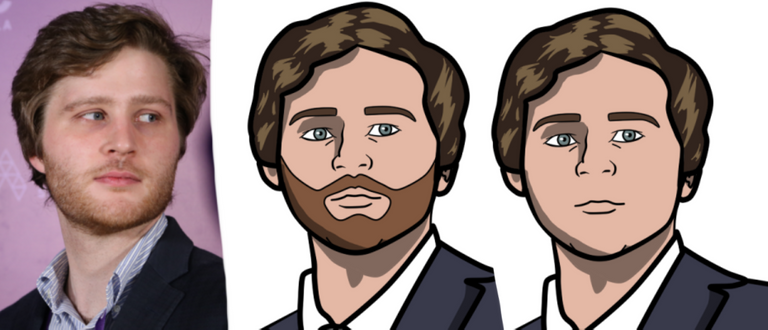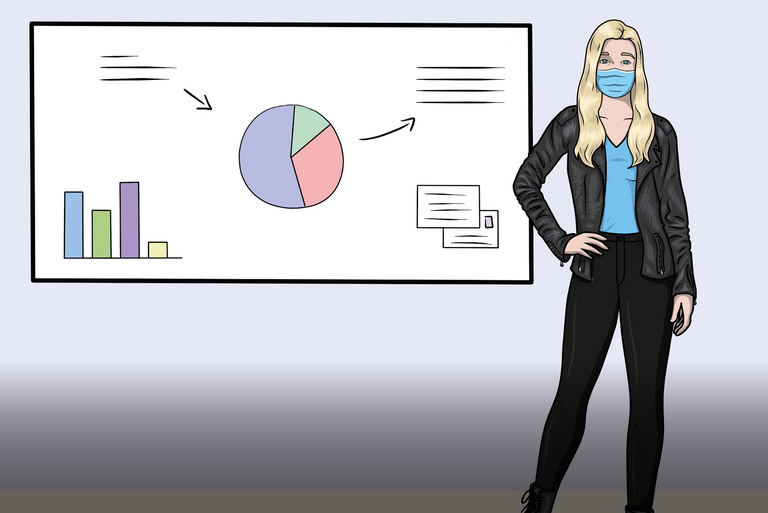Who's who at @dgmdynamics #episode1 - Proximity studio vs Persuasive marketing and its implications for the digital world
One of my dream was to make my company, but not any kind of company a future of web and entertainement type of company, but lets be honest I was not the manager type of person needed to create such thing alone and I need always validation of min 2 persons for anything I am doing, I asked two amazing persons I know if they could help me setup a startup.
It is like that, in earlt 2020 I get the luck to have Margaux @iameai and Jimmy joining me in this adventure soon with @bertille-aa and Monika @covermaker.
Who is the CEO ?
Jimmy is consultant in Blockchain, advisor in crypto investments and Full-stack developer who loves nodesjs, vue and react among many other framework such as hyperledger and solidity. He also like to drive and to box.
I've met Jimmy when he came at the first @solidarity meetup in Brussels organised by Thierry Graziani this incredible networker.

design by Monika @covermaker for @dgmdynamics

design by Monika @covermaker for @dgmdynamics
Margaux what did she do?

Before the first day Margaux was family, lil lika a small sister, as she was involved in my previous team at YUM Leadership Gmbh such as @bertille-aa, I've asked her to follow me on this adventure, she has been working as head of user experience, cooperating notably with Bertille and with Gergo on the usability and interaction design to produce design document and wireframe prototype using Figma.
Thanks to her dedication in the R&D of the company I focused on working for our clients and on our main projects @iameai and @ioverses as well as the studio part. As you might know me I am a very creative person.

We ve worked on a white paper “An introduction to Ethical targeting” for which we are working hard with many partners to implement.
A. Problem statement: Persuasive marketing and its implications for the digital world
Introduction to targeting and persuasive marketing.
Persuasion marketing has seduced a tremendous amount of marketers in a variety of industries. Today, technologies are developed in order to capture and sell users’ data and therefore users’ attention to advertisers and others. Well known social media companies such as Facebook or Youtube have a business model based on targeted advertisement, which in turn, enables persuasion marketing by crossing the users’ data.
Targeting conceptually works in a simple way. It picks up what you have liked and watched and what others, that are similar to you, have liked and watch too. It then infers from this information what you would be interested in. From any marketer’s point of view, it seems like a fabulous advertisement opportunity. Indeed, creating an ad and then broadcasting it massively but to a targeted population used to be a great advertisement challenge. Nowadays, it is attainable in just a few clicks and has helped many companies thrive. A lot of research has been made on targeting and marketing. One of the most used models for these companies is persuasion marketing.
Persuasion marketing is built upon B.J Fogg’s Behavior Model for Persuasive Design (Fogg, 2009). This model is based on the idea that consumers’ behavior can be changed depending on two axes : The consumer’s motivation (ex: search for pleasure) and the consumer’s ability to consume (ex: income). To activate a change in consumption behavior, all that is needed is to figure out when a potential consumer is high on both axes and then trigger him with the targeted ad. In this way, targeting offered by social media platforms enables persuasion marketing.
Ethical issues
This type of marketing puts forward ethical issues concerning social media’ s users: it is designed to answer the companies’ needs, not the consumers’ needs . As seen previously, targeting is designed in a way that the content presented to you is linked to the content you and others with similar profiles have previously interacted with, which inevitably drags you into more intense content relative to whatever you were previously watching. Combined with this technique, it appears persuasion marketing uses people’s tendency to a given behavior and pushes them into it by intentionally exposing them to a related advertised content, regardless of their needs. In other words, the use of Fogg’s model, enabled by targeting, to sell any kind of products (from material goods to ideologies) is based on pushing people to consume when they are the most likely to be influenced, regardless of the consumer’s actual needs. Consequently, users find themselves in a position where the content they have access to is progressively narrowed, obliterating many possibilities and putting forward others with the sole aim to increase companies’ selling rates.
B. Solution proposalCritical review of the model and implications
In order to understand how to tackle this ethical issue, it is important to unravel its implications. Firstly, by prioritizing the companies’ need to sell, social media expose their users to constant advertised content regardless of the users’ intent to consume. Indeed, when users connect to a given social media platform, their primary intentions aren’t to consume goods or services but to share and socialize with people of their community. Secondly, inherent to the idea of prioritizing companies’ needs, persuasive marketing and targeting don’t take into account what the users need or want but instead what could be sold to them. Lastly and in a complementary manner, the persuasive marketing model doesn’t take into account the user’s need within a given community, at a certain location and within a defined time frame.
Overall, not meeting the consumers’ needs to meet the companies’ needs is a marketing nonesens. Companies are created to respond to the demand market, yet their online marketing isn’t designed to meet this demand. On the contrary, it is designed to influence users to consume unneeded services instead of giving visibility to the companies when, where and to whom its services are actually needed and intentionally looked for.
This persuasive marketing model has survived for a long time as it answered companies’ needs by providing them buyers by subtle manipulation, but not by helping the offer market and the demand market align. In addition, it doesn’t provide any transparency to the consumers nor any direct feedback from the consumers to the companies.
As a result, advertisement’s efficiency on social media isn’t optimal. Facebook only makes 7.26 usd per year per user (CNBC, 2019). Considering an average person is exposed to thousands of ads per day, it's easy to see that even with questionably highly targeted advertisement, the effectiveness of these ads is low. Because long term users’ needs have been ignored, they have learned to ignore ads too, which decreases the effectiveness even more and pushes social media companies to keep on exposing users to more ads, creating a downward spiral that benefits noone in the long term.
More to come soon

Monika by Monika for @dgmdynamics

Hope you'll love our implemention work as we do with many feedback we do our best to consider each of them.
Want to help? Join our Bees and Pis miners
https://j.bee.com/s?a=jnmarteau
https://minepi.com/jnmarteau
or
Even small ETH donations are always appreciated. Here our IM Wallet
0xADF8785EC0698BC5e9D03Bc2C7881305e9110606
Looking forward to your feedack !
Thanks for reading "Who is who at @dgmdynamics #episode1 - le studio"
All the best Monika @covermaker &
Jean @marteau (@jnmarteau)

can one now also get covid from cartoons or why do the persons wear masks?
to protect me?